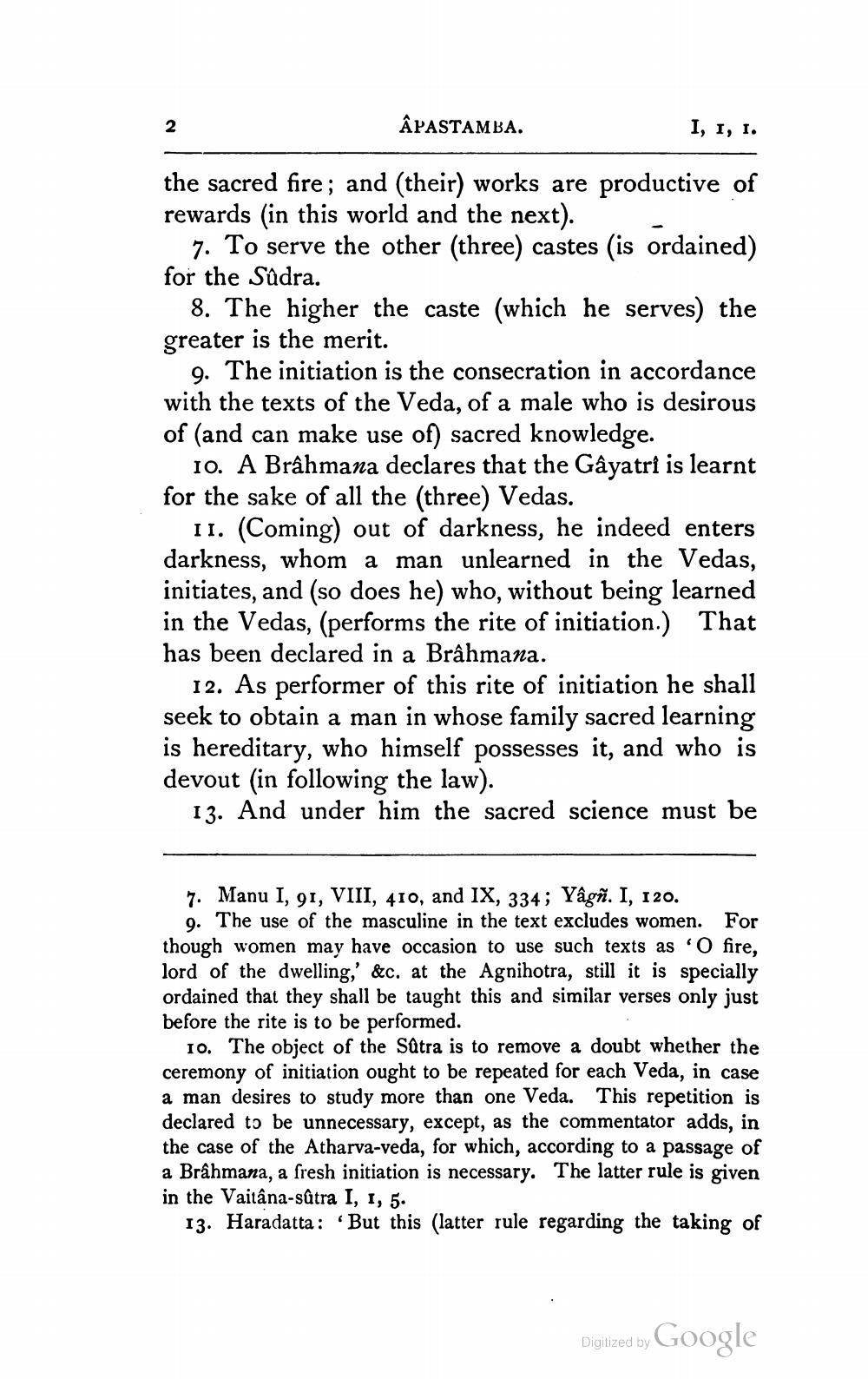________________
2
ÂPASTAMBA.
I, I, I.
the sacred fire; and (their) works are productive of rewards (in this world and the next).
7. To serve the other (three) castes (is ordained) for the Sûdra.
8. The higher the caste (which he serves) the greater is the merit.
9. The initiation is the consecration in accordance with the texts of the Veda, of a male who is desirous of (and can make use of) sacred knowledge.
10. A Brahmana declares that the Gâyatrî is learnt for the sake of all the (three) Vedas.
11. (Coming) out of darkness, he indeed enters darkness, whom a man unlearned in the Vedas, initiates, and (so does he) who, without being learned in the Vedas, (performs the rite of initiation.) That has been declared in a Brâhmana.
12. As performer of this rite of initiation he shall seek to obtain a man in whose family sacred learning is hereditary, who himself possesses it, and who is devout (in following the law).
13. And under him the sacred science must be
7. Manu I, 91, VIII, 410, and IX, 334; Yâgñ. I, 120. 9. The use of the masculine in the text excludes women. For though women may have occasion to use such texts as 'O fire, lord of the dwelling,' &c. at the Agnihotra, still it is specially ordained that they shall be taught this and similar verses only just before the rite is to be performed.
10. The object of the Sûtra is to remove a doubt whether the ceremony of initiation ought to be repeated for each Veda, in case a man desires to study more than one Veda. This repetition is declared to be unnecessary, except, as the commentator adds, in the case of the Atharva-veda, for which, according to a passage of a Brahmana, a fresh initiation is necessary. The latter rule is given in the Vaitâna-sûtra I, 1, 5.
13. Haradatta: But this (latter rule regarding the taking of
Digitized by Google




